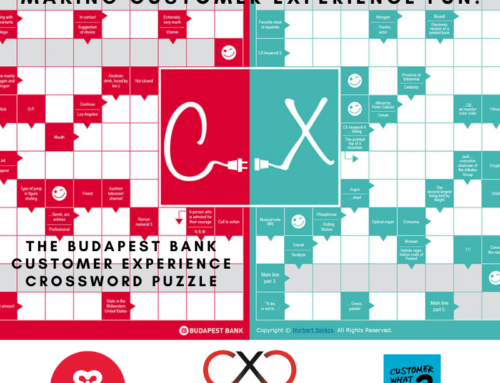
In the last twenty years I have worked for a range of different organisations of varying shapes and sizes. I started out with a small independent invoice finance business in 1995. Moving on to the Royal Bank of Scotland, Deutsche Bank and GE, the businesses that I experienced got bigger and more diverse. I also spent time working for Liberata (outsourcing), Brakes (food service) and Shop Direct (retail) before becoming an independent Customer Experience Specialist in 2012.
Whilst this blog post is not a platform to share my CV, it is important to provide the context that is the substance of the post. Although every company I have worked for has been completely different – culturally; behaviourally; strategically – they have all demonstrated a striking commonality. Whether it is food, invoice finance or a pair of jeans, all of the businesses I worked for continually struggled to juggle two very big balls – can you guess what the balls were/are?
The title of this blog post is a big clue. One of the big balls that every business I have worked for has been constantly juggling is the ‘cost’ ball – not many of us would be able to say that they have not experienced the same. Cost control is a consideration for all businesses, and the rearing of the ‘cost cutting scythe’ is a constant threat.
The other big ball that I have seen being juggled in the same pair of hands is the ‘revenue’ or ‘growth’ ball. All of my employers have had strategies that contained a desire to grow and increase revenues. Once again, I am sure this does not surprise you.
You may have noticed that neither or the balls (an interesting analogy in itself) that I have mentioned include the word ‘customer’. I have not worked for a company that at the beginning possessed a ‘customer’ ball. It was all about cost and/or growth – with one exception. It was not until I started to work for GE that I saw a business look at what they do in a very different light.
When I started the GE chapter of my career, it was in the last few years of the Jack Welch era. One of the most transformational business leaders of all time, the influence he exerted on one of the biggest organisations on the planet has very much shaped who I am as a business professional today. Jack Welch introduced Six Sigma to GE – the much maligned process improvement methodology was a huge part of Jack’s plan to turn the multi-national conglomerate into the most efficient customer focussed set of businesses in the world. The methodology is ‘much maligned’ as many have misinterpreted both its true application, and experienced inappropriate six sigma deployments – you can read more about my views on the stigma behind Six Sigma here https://ijgolding.com/2013/09/16/shhhhh-dont-mention-six-sigma-the-truth-behind-the-stigma/

Jack Welch was once quoted as saying the following when reference their Six Sigma Quality Programme – “Control your own destiny or someone else will”
The doubters behind the method have sadly very much missed the point. The reason why Jack Welch believed in introducing a rigorous process and fact driven methodology into his business strategy is that he understood its real benefit. In order to be able to effectively juggle the ‘cost’ and ‘growth’ balls together, you needed to understand how to ‘take the cost out of your processes whilst making the experience better for your customers’. When you think about it, it makes perfect sense. When you remember that he started out on this path in the early 80’s, it was revolutionary.
Fast forward to 2014, and most organisations are still trying to juggle the ‘cost’ and ‘growth’ balls. The difference in 2014 is that a growing number have added a third ball into the mix – the missing ‘customer’ ball. Juggling two balls is tough – juggling three is even tougher – unless you understand how best to juggle them!
There is no better way to describe my approach to business than ‘Cost Out – Experience In’. As a Customer Experience Specialist focussed on helping businesses to transform, I do so by helping you to remove unproductive cost whilst putting customer experience back in – or in other words, improving your customer experience. I do not do one or the other – I do both at the same time. Joining them together enables the ‘growth’ ball to fall perfectly into place.
Delivering more consistent customer experiences that meet and/or exceed customer expectation requires less ‘effort’ from you, your company and your customers – which will result in lower costs to serve. Effort = Cost, Simple. Every time a customer contacts you because something has ‘gone wrong’, or because they are ‘dissatisfied’, is costing time and money and creating unnecessary effort. Every time you fail to do what your customer needs you to do across your customer journey is a failure generating ‘unproductive cost’. That is why we believe that to genuinely transform your business, you need to understand your customer journey, and ensure that you have the appropriate ‘target operating model’ in place to deliver it. Once this has been achieved, you will stand a much better chance of aligning your colleagues and your customers’ values to support your brand vision.
What I am describing is what Jack Welch did for twenty years. The concept is not new. It is also not easy – which may explain why so many companies in 2014 are still struggling to juggle their balls. To acknowledge your business needs transforming takes balls (excuse the pun) – and if you need help in knowing how to do it, then do not hesitate to get in contact with me – I’ll help you find out how.
If you fancy a chat about this or anything to do with customer experience and business transformation, please feel to contact me by email at ian@ijgolding.com or by phone on 07770736832.






Leave A Comment